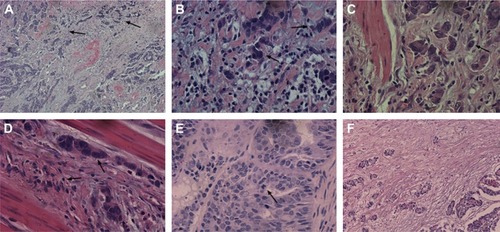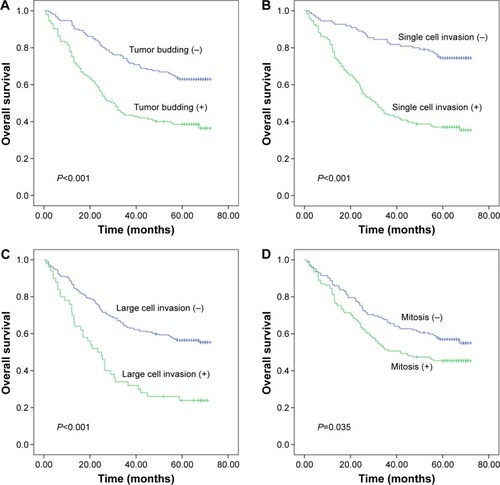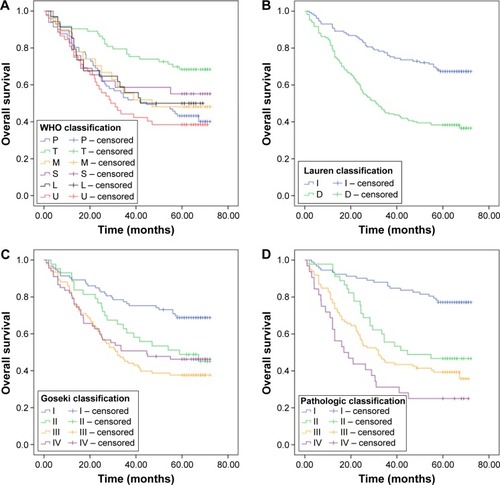Figures & data
Table 1 Associations between invasion types and clinicopathological characteristics of 296 patients with gastric adenocarcinoma
Figure 1 Microscopic observations for gastric adenocarcinoma (HE stain).
Abbreviation: HE, hematoxylin and eosin.

Figure 2 Overall survival (OS) figures pertaining to tumor budding (A), single cell invasion (B), large cell invasion (C), and mitotic count (D) in gastric adenocarcinoma.

Figure 3 Survival curves according to different classification systems in gastric adenocarcinoma.
Abbreviation: WHO, World Health Organization.

Table 2 Univariate Cox regression analysis of clinical and pathological characteristics
Table 3 Multivariate Cox regression analysis of clinical and pathological characteristics
